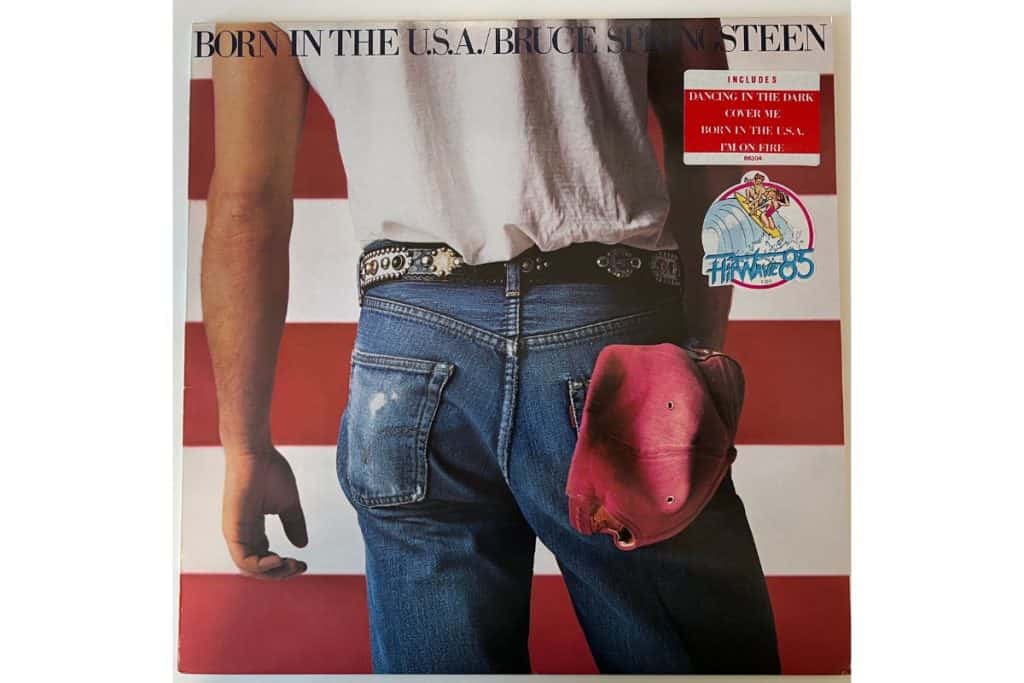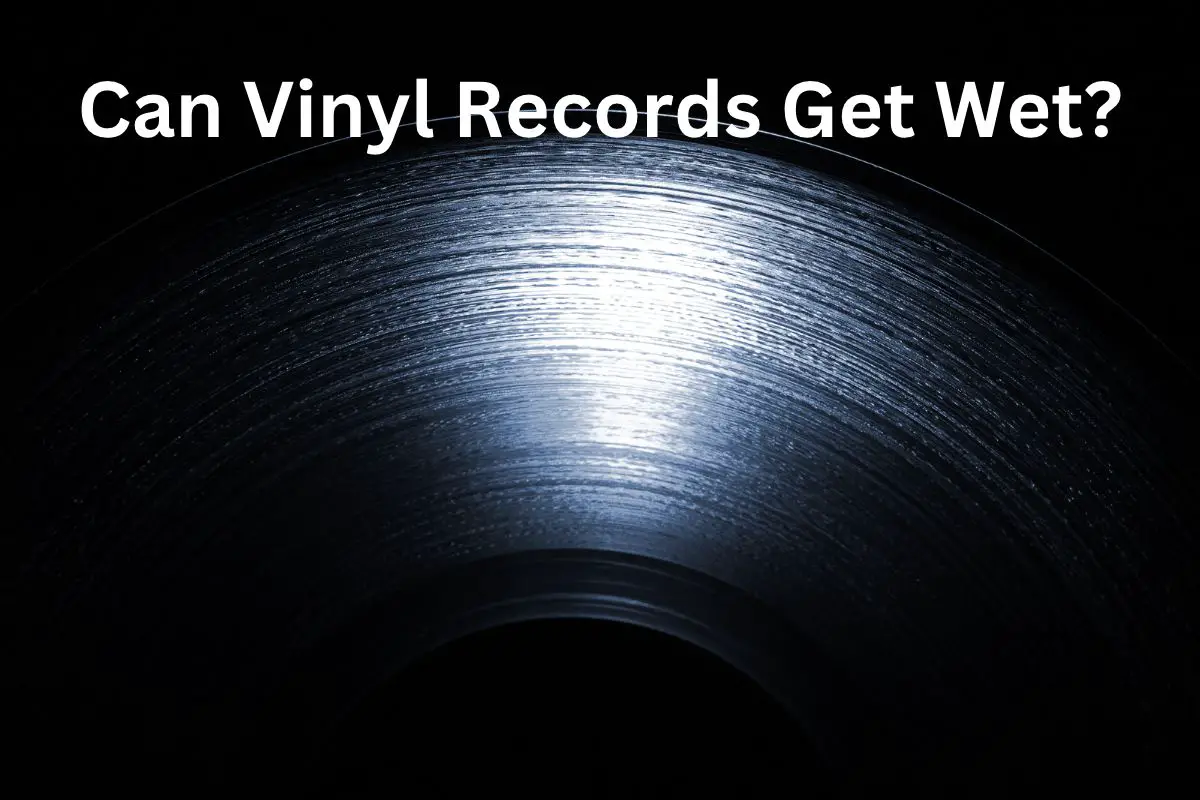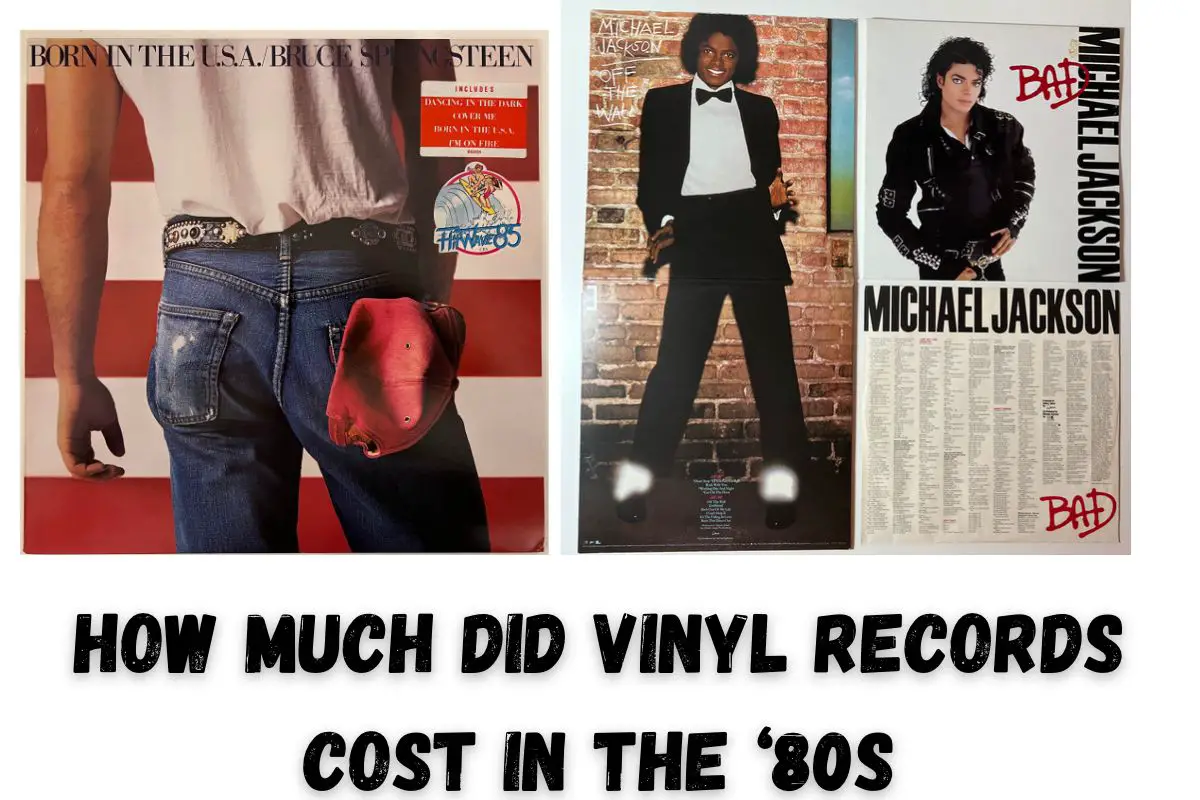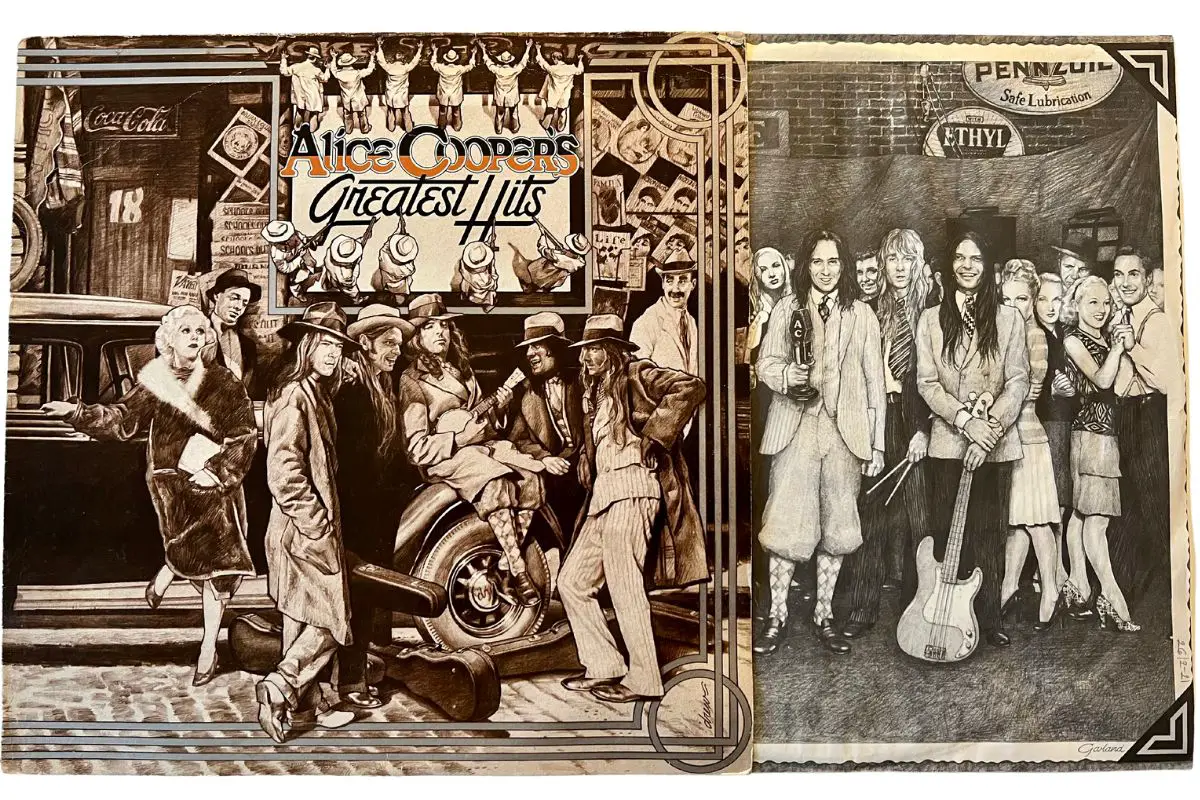This post contains affiliate links.
I was born in the 70s. Growing up, I owned a lot of records, making certain to drive my parents crazy with loud music they didn’t understand. Some of these records were LP; all of them were vinyl.
Vinyl and LP aren’t quite the same. Vinyl refers to the material used to make records (those funny spinning discs you youngsters sometimes still see in antique stores). On the other hand, LP stands for “long play” and is directly linked to a record player’s RPM setting.
These days it seems that vinyl records are more of a niche thing. Music enthusiasts will sometimes come to blows over what recording method sounds better and why. This article will cover what makes a vinyl record and LP record and the differences between the two, including the history of vinyl records and what LP records bring to the table.
Table of Contents
About Vinyl Records
Polyvinyl chloride, or PVC, makes up over 95% of what vinyl records are made from. There are a few reasons for this. Here they are in bullet form:
- PVC is smooth and not prone to chipping.
- PVC can be grooved for the passage of record needles without damage.
- PVC provides a “quiet” surface that doesn’t disrupt recordings.
PVC is quite practical and doesn’t cost a fortune to produce, making it cost effective to manufacture.
If you’ve ever held a vinyl record, then you know how firm they are. Their surface grooves are easily visible. These grooves are actually captured fingerprints of sound waves created by recorded music. When a record stylus moves through the grooves, it transfers vibrations down the stylus arm (cantilever), which are then amplified through a speaker.
This is how we listened to the Bee Gees in our polyester suits. Today you can still buy vinyl records if you know where to look, and there are many specialty shops that sell them. Indeed, a massive spike in vinyl sales took place around 2016 and is still going strong here in 2022. Nor are vinyl records limited to geriatric rock stars. Taylor Swift and Billie Eilish are both big proponents of the medium.
So that, in a proverbial nutshell, is vinyl—the material used to make turntable records. Now let’s move on to what LP is all about and why it’s so essential to sound quality.
About LP (Long Play) Records
LP stands for Long Play. When you buy an LP vinyl record, it’s generally a full-sized album made up of 10 or 12 songs on a 12″ disc. (Back in my day, it was more like 8 to 10 songs, but times change).

To play an LP record, you’ll typically need to set the turntable to 33 rotations per minute. Other settings include 45 and 78, which are used for singles, or EP (extended play records). An LP spinning at 33 RPM provides about 22 minutes of music per side. Record manufacturers were super pleased to make this discovery, because it meant they could imprint more songs on a single disc.
The first LP record was released by Columbia records way back in 1948. Truman was still in the White House. Bread was thirteen cents per loaf. My dad was only a year old. What music occupied Columbia’s ground-breaking record? The Mendelssohn Concerto in E minor. Each side was 23 minutes long, and they sounded pretty crisp.
You can still buy classical music on LP vinyl. Please don’t ask me to defend the shameful lowlands of my generation’s preference toward disco and pop rock. It was what it was. LP vinyl survives to this day on turntables all over the world.
But why 33 RPM? How does the speed of a spinning record affect sound quality? The next part of this article will examine turntable RPM up close, giving you a better idea of the differences between LP and vinyl.
Records And RPM (Rotations Per Minute)
Earlier in the article, I mentioned that manufacturers press most vinyl records for either 33, 45, or 78 rotations per minute. The LP, or long play record, uses 33 – most of the time. Some LP records actually spin at 45 to achieve better sound quality.
Better sound quality at higher rotations per minute? At first, it doesn’t seem to make sense. After all, when we think of adding minute details to any project, it’s almost a given that the project will need to slow down, not speed up.
Here’s the part where I tell you that sound quality is affected not only by the speed of a vinyl record but also by the size of the record at hand. Remember that LP vinyl is typically pressed onto a 12″ disc. This, combined with the 33 RPM spin setting, allows record pressers to fit more songs into one nifty record store package. Now remember that vinyl records are made up of grooves that produce vibrations on a tonal arm.
The depth and curvature of the grooves have a huge influence on sound quality. As the stylus on the turntable arm moves closer to the center of a record, the groove curve becomes tighter. Keep in mind that our record is still spinning at 33 RPM.
However, with a shorter distance to travel around the center of the disc, the grooves become more narrow. The stylus needs to work harder to stay inside the grooves, which causes sound distortion and high-frequency reduction.
On an LP spinning at 45 RPM, the grooves are more detailed and thus provide more data for the stylus to transfer up the turntable arm. These same grooves become more narrow as the stylus moves closer to the center, but not nearly as much as with an LP 33.
Record pressers have done lots of research into getting that distance from the center to the edge just right to make an LP sound good—or at least good enough. And here, we gain a better understanding of why enthusiasts go on and on about the tip of a stylus being so influential to sound quality.
Quite literally, we’ve got it all broken down to a science—the science of sound.
So Any Record Can Be Vinyl, but Not Any Record Can Be LP?
The 45 RPM single record came to us about 75 years ago. Just like the LP, companies pressed them onto a vinyl platter. But the EP—extended play—is not an LP, because a 45 single normally holds only two tracks.
The EP and the LP are both pressed onto a vinyl platter or disc, so yes, pretty much every record you use today can be—and probably is—vinyl. Whether or not the record is considered an LP depends upon its size and, more importantly, how many tracks it’s able to play.
Most LP vinyl records are 12 inches (30.5 cm) across and spin at 33 RPM. Both factors allow them to play an entire album rather than just one or two songs (tracks). 45 “singles”, also made from vinyl, are 7 inches (17.8 cm) across. They have a wider center, or singularity, which means the grooves don’t need to get so tight as they approach the event horizon; thus, the 45 single provides better sound quality, though the songs are fewer.
So forget about pressing John Lennon’s Double Fantasy or anything like it onto a 45. However, said 45 will most likely be made of polyvinyl chloride. PVC remains the go-to material for turntable records today.
LP Records at 45 RPM
Remember this article’s section about records and RPM? I began by suggesting that most LP records are recorded for 33 RPM to fit in enough songs for an entire album: most LPs, but not all.
You can still purchase long-play vinyl albums pressed for 45 rotations per minute. As discussed, the format kicks out better sound quality. Sometimes it’s the artist who insists upon having this format, and sometimes it’s the studio.
In any case, when you buy an LP meant to be played at 45 RPM, you’ll almost always get two records in the sleeve. With the turntable spinning faster, there simply isn’t enough room to fit an entire album on one of these records alone.
I owned dozens of vinyl 45s in my youth—way more than the full-length LP. The EP singles were cheaper—plus, I think I held the pole position on that cynical curve of belief which says artists will only write “two or three good songs” and about ten “fillers” for the rest of an album. Who needs fillers? I went for the quality.
Scout’s honor: Until sitting down to write this article, I had never heard of the 45 LP. As a kid, I never would have believed in their existence. “You can’t play an LP at 45 RPM—it’ll sound like The Chipmunks!” But they’re real all right. And though the packaging is a bit heavier, the music is most certainly sweeter.
Is Vinyl the Only Material Used To Make Records?
The recording industry has been in the know about the benefits of vinyl for almost 80 years. Since those days, no other material has risen to knock PVC off the top of the hill. In the pre-1940s, however, things were certainly a bit different.
Today’s LP records are made of vinyl, and it’s almost impossible to find one made of anything else. Having said that, records pressed before World War II were often made of shellac, though shellac records weren’t Long Play.
And speaking of World War II, it turns out that conflict was something of an influence as to how shellac got replaced with vinyl. When the war broke out, then U.S. President Franklin Roosevelt ordered that shellac records be cut by 70 percent. How come? Because shellac—a resin produced by female lac bugs in India and Thailand—is also used to make explosives.
But even had it not been convenient for blowing things up, shellac stood no chance against vinyl when it came to LP records. Not only do shellac records break much easier than PVP, but manufacturers needed to cut their grooves wider, forcing higher RPM (78) to play them. Today it’s challenging to find an unbroken, playable shellac 78.
After the war, some record companies—Columbia and Atlantic, to name two—chose to press their 7″ 45s on a cheaper form of plastic known as styrene. Due to it being more brittle and easier to crack, styrene was not used for LP pressings.
Modern Industry Semantics
We’ve kicked around lots of terminologies during this article. Fingers crossed, you’re still with me. Or am I beginning to sound like a broken record? Anyway, let’s review some of this terminology to set the record straight:
- LP stands for “Long Play”; it’s a kind of record about 12” in size that can play 12 to 14 songs at 33 RPM.
- Vinyl is short for polyvinyl chloride; it is the type of plastic almost every LP is made of.
- RPM stands for rotations—or revolutions—per minute, and literally measures the speed at which your turntable needs to spin to make the music sound as intended.
- The stylus is like a needle that rides inside a vinyl record groove.
- The cantilever is the arm attached to the stylus; as the stylus reads the sound imprint of the groove, electrical vibrations are sent up the cantilever to an amplifier.
One more tidbit about LP vinyl before we move to the conclusion: Based on personal experience, LP vinyl tends to warp and become damaged more easily than EP vinyl. This is likely due to LP grooves being closer together and the record itself being a tad more weighty.
Conclusion
Vinyl and LP aren’t the same thing. Vinyl refers to the material the record is made of (polyvinyl chloride), whereas LP (Long Play) relates to the length of the recording. That’s the only real difference between the two, but of course the number of tracks supported by each can be different.
But hey, now you’re more familiar with why vinyl is used for these records, and why their playback speed is so imperative.
You might also be interested in these articles:
- The Differences Between 33/45/78 Records
- What Is a 45 RPM Adapter? Let’s Find Out
- Can Record Players Play All Sizes Of Records?
VacationVinyl.com is a participant in the Amazon Services LLC Associates Program, an affiliate advertising program designed to provide a means for sites to earn advertising fees by advertising and linking to Amazon.com. We also participate in other affiliate programs which compensate us for referring traffic.





